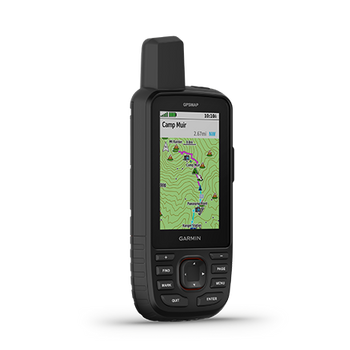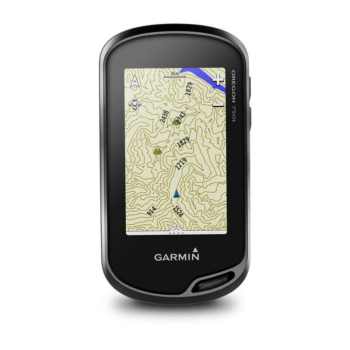- Reliable satellite communication
- Durable and rugged design
- Accurate and detailed maps
- User-friendly touchscreen
- Advanced mapping features
- Built-in camera
- Expensive
- Heavy compared to other models
- Shorter battery life
- More expensive than basic models
Garmin GPSMAP 66i vs Garmin Oregon 750t
When it comes to navigating the great outdoors, having a reliable handheld GPS device is essential. Two popular options from Garmin, a leading brand in GPS technology, are the GPSMAP 66i and the Oregon 750t. Both devices are designed for outdoor enthusiasts, but they have distinct features and functionalities that set them apart. In this comparison, we'll delve into the details of these handheld gps units to help you decide which one is best suited for your needs.
Design and Display
The Garmin GPSMAP 66i has a rugged design with a 3-inch color display, providing clear visibility in various lighting conditions. The device is compact and lightweight, weighing approximately 8.5 ounces, making it easy to carry on long hikes or backpacking trips. On the other hand, the Oregon 750t features a 3-inch touchscreen display with a higher resolution, offering more vivid colors and sharper images. The Oregon 750t is slightly larger and heavier than the GPSMAP 66i, but still remains portable and ergonomic.
Navigation and Mapping
Both devices offer advanced navigation capabilities, including GLONASS and Galileo support, which provide faster and more accurate positioning. The GPSMAP 66i comes with preloaded TopoActive maps, which include detailed topographic data, trails, and points of interest. Additionally, the device supports BirdsEye Satellite Imagery, allowing users to download high-resolution satellite images for enhanced navigation. The Oregon 750t also features preloaded TopoActive maps, as well as additional map options like Garmin's Hunting Maps and Fishing Maps. Furthermore, the Oregon 750t supports Wi-Fi connectivity, enabling users to wirelessly update maps and software.
Communication and Connectivity
One of the key differences between these handheld gps units is their communication capabilities. The GPSMAP 66i features built-in inReach satellite technology, allowing users to send and receive messages, track their route, and even trigger an SOS alert in emergency situations. This feature provides peace of mind for those venturing into remote areas with limited cell coverage. In contrast, the Oregon 750t does not have built-in satellite communication capabilities but can connect to a smartphone via Bluetooth, enabling users to receive notifications and share data.
Battery Life and Durability
Both devices are designed to withstand harsh outdoor conditions, including dust, water, and extreme temperatures. The GPSMAP 66i has a battery life of up to 16 hours in GPS mode, while the Oregon 750t can last up to 16 hours in GPS mode as well. However, the GPSMAP 66i's battery life can be extended to 200 hours when using the device's power-saving mode.
Additional Features
The Oregon 750t offers a range of additional features, including an 8-megapixel camera, allowing users to capture geotagged photos and videos. The device also supports ANT+ connectivity, enabling users to connect external accessories like heart rate monitors and cadence sensors. In contrast, the GPSMAP 66i does not have a built-in camera but offers more advanced navigation features, such as route planning and trip logging.
Conclusion
In conclusion, both the Garmin GPSMAP 66i and Oregon 750t are high-quality handheld gps units designed for outdoor enthusiasts. While they share some similarities, their distinct features and functionalities set them apart. The GPSMAP 66i is ideal for those who require advanced navigation capabilities, satellite communication, and a compact design. On the other hand, the Oregon 750t is better suited for users who want a device with a higher-resolution touchscreen display, additional mapping options, and features like an integrated camera and ANT+ connectivity. Ultimately, the choice between these two devices depends on your specific needs and preferences.































